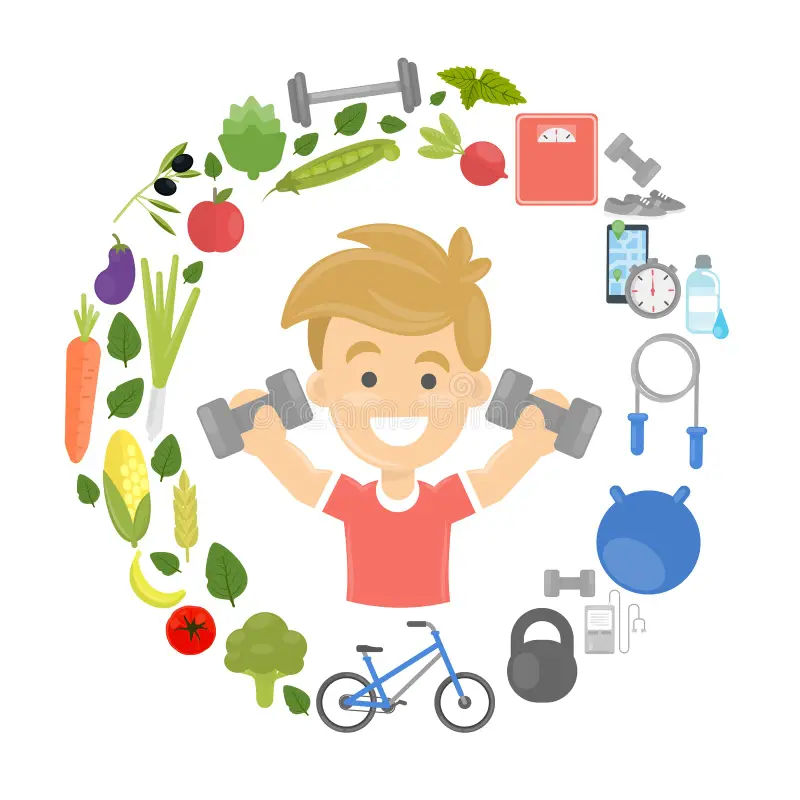15 Ways to Stay Active and Fit during the Summer Months

Updated at: 2023-07-04 19:51:01 (2 years ago by Melkisedeck Leon Shine)
15 Ways to Stay Active and Fit during the Summer Months
🌞 The summer months bring warm weather and longer days, making it the perfect time to get active and stay fit. Engaging in physical activities not only helps us maintain a healthy lifestyle but also allows us to make the most of the beautiful weather. Here are 15 creative ways to stay active and fit during the summer months, with practical examples and professional advice:
1️⃣ Explore the great outdoors: Take advantage of nature's beauty by going for hikes, bike rides, or simply walking through local parks or trails. Not only will you get some exercise, but you'll also enjoy the fresh air and stunning scenery.
2️⃣ Take a dip: Swimming is an excellent way to cool off and stay active during the summer months. Whether it's in a pool, lake, or ocean, swimming engages your entire body and provides a refreshing workout.
3️⃣ Try water sports: If you're up for a challenge, give water sports a go. Activities like paddleboarding, kayaking, or surfing provide an exciting and active way to spend your summer days near the water.
4️⃣ Join a sports team: Engaging in team sports not only allows you to stay fit but also promotes social interaction and teamwork. Consider joining a local softball, soccer, or volleyball league to enjoy some friendly competition.
5️⃣ Organize outdoor games: Gather your friends and family for a game of soccer, frisbee, or basketball at your local park. Not only will you have fun, but you'll also be engaging in physical activity without even realizing it.
6️⃣ Garden for fitness: Gardening is a fantastic way to stay active and connect with nature. Planting, weeding, and watering require physical effort and can be a fulfilling and therapeutic summer activity.
7️⃣ Take up outdoor yoga: Find a peaceful spot outdoors, like a garden or a beach, and practice yoga. The combination of fresh air, sunshine, and physical exercise will leave you feeling rejuvenated and centered.
8️⃣ Get on wheels: Dust off your old bicycle, rollerblades, or skateboard and hit the pavement. These activities not only provide an enjoyable experience but also work your leg muscles and improve cardiovascular health.
9️⃣ Join a boot camp: Many fitness centers offer outdoor boot camps during the summer months. These group workouts are a great way to challenge yourself, push your limits, and get fit with the guidance of professional trainers.
🔟 Embrace outdoor workouts: Instead of hitting the gym, take your exercise routine outside. Perform bodyweight exercises like push-ups, squats, lunges, and planks at your local park or in your backyard.
1️⃣1️⃣ Participate in charity walks or runs: Many organizations host fundraising walks or runs during the summer. Not only will you contribute to a good cause, but you'll also stay active and motivated to train for the event.
1️⃣2️⃣ Stay hydrated: Remember to drink plenty of water during your summer activities. Staying hydrated is crucial to maintaining your energy levels and ensuring the proper functioning of your body.
1️⃣3️⃣ Plan active vacations: When traveling during the summer months, seek out destinations that offer opportunities for active adventures. Hiking, cycling tours, or kayaking trips can turn your vacation into a fitness retreat.
1️⃣4️⃣ Dance the summer nights away: Sign up for dance classes or attend outdoor dance events. Dancing not only gets your heart rate up but also helps improve coordination and flexibility.
1️⃣5️⃣ Set goals and track progress: Keep yourself motivated by setting fitness goals and tracking your progress. Utilize smartphone apps or fitness trackers to monitor your steps, calories burned, or distance covered.
☀️ Staying active and fit during the summer months is not only essential for our physical health but also enhances our overall well-being. By incorporating these 15 creative ways into your routine, you'll enjoy a summer filled with fun activities, improved fitness levels, and a positive mindset. So go ahead and embrace the season – your body will thank you!


